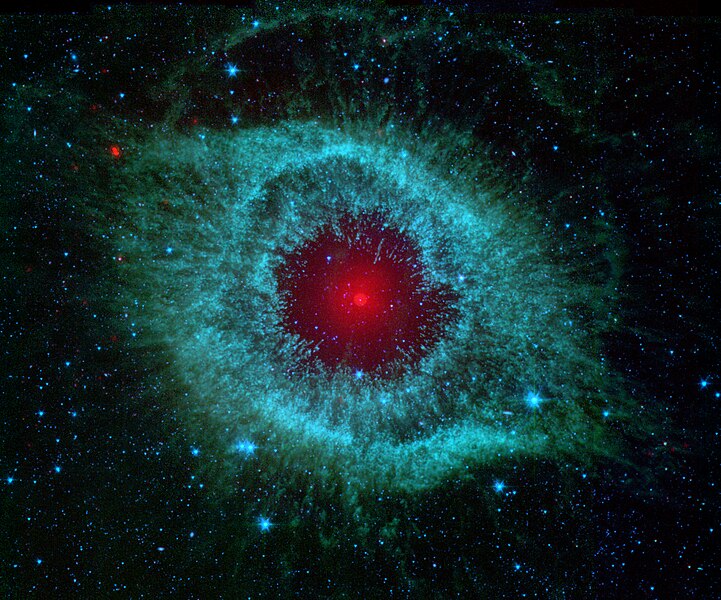Berkas:Comets Kick up Dust in Helix Nebula (PIA09178).jpg

Ukuran pratayang ini: 721 × 600 piksel. Resolusi lainnya: 289 × 240 piksel | 577 × 480 piksel | 923 × 768 piksel | 1.231 × 1.024 piksel | 2.462 × 2.048 piksel | 4.279 × 3.559 piksel.
Ukuran asli (4.279 × 3.559 piksel, ukuran berkas: 7,22 MB, tipe MIME: image/jpeg)
Riwayat berkas
Klik pada tanggal/waktu untuk melihat berkas ini pada saat tersebut.
| Tanggal/Waktu | Miniatur | Dimensi | Pengguna | Komentar | |
|---|---|---|---|---|---|
| terkini | 13 Februari 2007 03.43 |  | 4.279 × 3.559 (7,22 MB) | Startaq | {{Information |Description=This infrared image from NASA's Spitzer Space Telescope shows the Helix nebula, a cosmic starlet often photographed by amateur astronomers for its vivid colors and eerie resemblance to a giant eye. The nebula, located about 700 |
Penggunaan berkas
Tidak ada halaman yang menggunakan berkas ini.
Penggunaan berkas global
Wiki lain berikut menggunakan berkas ini:
- Penggunaan pada af.wikipedia.org
- Penggunaan pada ar.wikipedia.org
- Penggunaan pada arz.wikipedia.org
- Penggunaan pada ast.wikipedia.org
- Penggunaan pada ba.wikipedia.org
- Penggunaan pada bg.wikipedia.org
- Penggunaan pada bjn.wikipedia.org
- Penggunaan pada bn.wikipedia.org
- Penggunaan pada br.wikipedia.org
- Penggunaan pada ca.wikipedia.org
- Penggunaan pada cs.wikipedia.org
- Penggunaan pada de.wikipedia.org
- Penggunaan pada dsb.wikipedia.org
- Penggunaan pada en.wikipedia.org
- Helix Nebula
- Spitzer Space Telescope
- Comet nucleus
- Talk:Helix Nebula
- User:Swirlex/Userboxes
- User:Swirlex/Userboxcode
- NASA
- Wikipedia:Featured pictures/Space/Looking out
- User:Nonexyst
- User:Benjamin112
- Portal:Outer space/Selected picture
- User:Sunfishtommy/sandbox
- Wikipedia:Featured pictures thumbs/44
- Wikipedia:Featured picture candidates/October-2014
- User talk:Benison/Archive 19
- Wikipedia:Featured picture candidates/The God's Eye
- Wikipedia:Picture of the day/October 2016
- Template:POTD/2016-10-12
- Wikipedia:Main Page history/2016 October 12
- User talk:69.50.70.9
- User:The NMI User
- User:Corinne/subpage
- User talk:Benison/Archive 37
- Wikipedia:Userboxes/Science/Astronomy
- User:Catfurball
- User:Huggums537
Lihat lebih banyak penggunaan global dari berkas ini.



